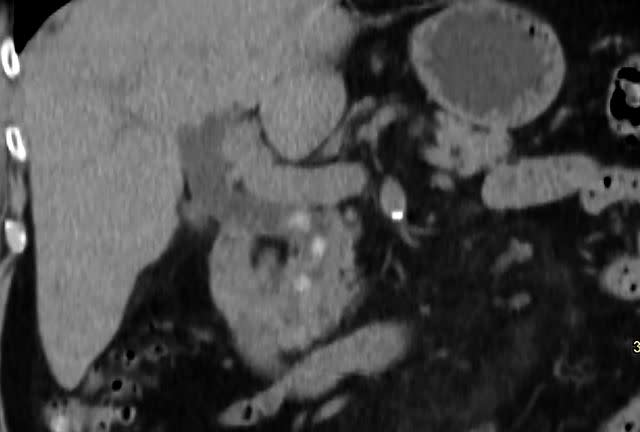What Is Choledocholithiasis?
Gallstones in the Bile Duct
Choledocholithiasis is a condition in which gallstones appear in the common bile duct, a small tube that transports liver bile, a type of digestive fluid. Choledocholithiasis doesn’t have symptoms unless a stone blocks the duct. In that case, it becomes a potentially life-threatening condition that requires treatment, usually with surgery.
Continue reading to learn more about choledocholithiasis, including how it’s diagnosed, its treatment, and the likelihood of needing surgery with choledocholithiasis.

Paul Biris / Getty Images
Symptoms
Most people with gallstones, including stones in the common bile duct, don’t have symptoms. It’s possible to have choledocholithiasis without knowing it and without it posing a risk to your health.
Symptoms appear when a gallstone blocks the common bile duct. This can lead to a gallbladder attack, also known as biliary colic. People with choledocholithiasis who have a blocked duct may notice symptoms including:
Abdominal pain in the upper right or middle abdomen. It may be mild or severe.
Fever
Yellow hue to their skin or eyes
Nausea, vomiting or loss of appetite
Clay-colored stools
It’s estimated that 10% to 15% of Americans have gallstones. Of those, 20% will experience a gallbladder attack over 15 years. The risk of an attack is about 1% to 2% per year.
Causes
Choledocholithiasis happens when gallstones appear in the common bile duct. This can occur either because stones form directly in the common bile duct or because stones pass from the gallbladder to the bile duct.
People who have gallstones are more likely to develop choledocholithiasis as they get older. Other risk factors for gallstones may increase your risk for choledocholithiasis, including:
Being overweight or losing a significant amount of weight quickly
A family history of gallstones
Medical factors can also increase the risk of gallstones and, with it, the risk of choledocholithiasis. These include:
Diabetes
Organ or bone marrow transplant
Cirrhosis of the liver (severe scarring of the liver)
Taking birth control pills
Choledocholithiasis can occur even in people who have had their gallbladder removed.
Diagnosis
If you’re having symptoms of a gallbladder attack, you should seek immediate medical care. In addition to observing your symptoms, your healthcare provider will order tests to confirm choledocholithiasis. The tests might include:
An abdominal computed tomography (CT) scan or ultrasound
They may also order blood work to measure your:
"Cholelithiasis" is the medical term for gallstones. Choledocholithiasis is the condition that occurs when gallstones are in the common bile duct. About 14% of people with cholelithiasis will develop choledocholithiasis.
Treatment
Choledocholithiasis does not require treatment unless you are experiencing symptoms. If symptoms appear, you’ll likely need surgery. The surgeries used to treat choledocholithiasis are:
Gallbladder surgery to remove the gallbladder and stones
Sphincterotomy, a procedure that creates a surgical opening in the common bile duct, which can allow the stone to pass through or be used to remove the stone
Prognosis
The prognosis for choledocholithiasis is very good. If you don’t have symptoms, you have just a 1% to 2% chance of developing them in a given year. When symptoms do present, it’s important to get medical care quickly. After recovery from surgery most people with choledocholithiasis return to their normal state of health.
Summary
Choledocholithiasis occurs when gallstones are in the common bile duct. The stones might move to the duct from the gallbladder, or form directly in the common bile duct. Because of that, even people who have had their gallbladder removed can have choledocholithiasis.
Choledocholithiasis doesn’t require treatment unless you have symptoms of a gallbladder attack. In that case, you’ll need surgery to remove the gallbladder and stones, or to allow a stone to pass through your common bile duct.

